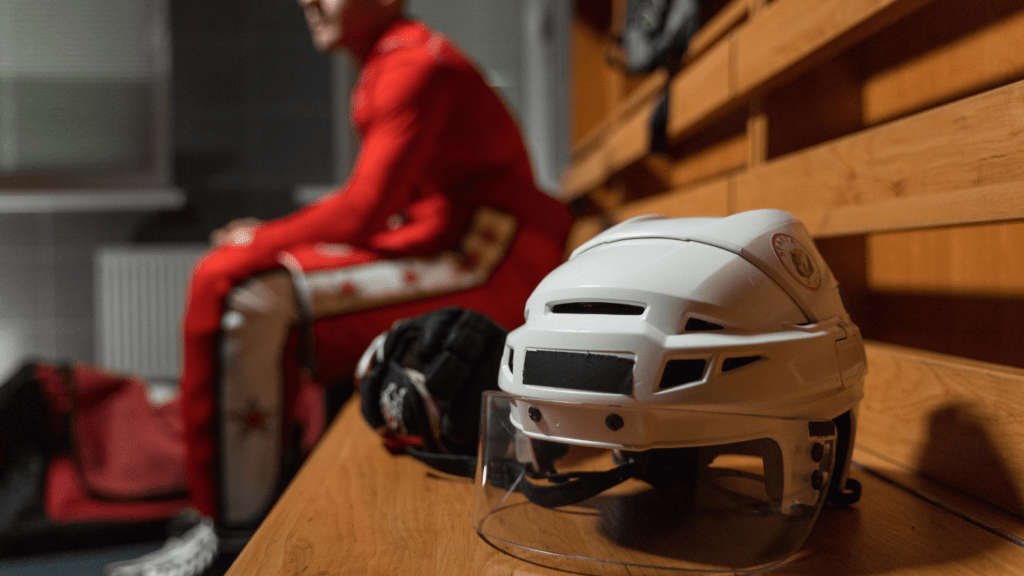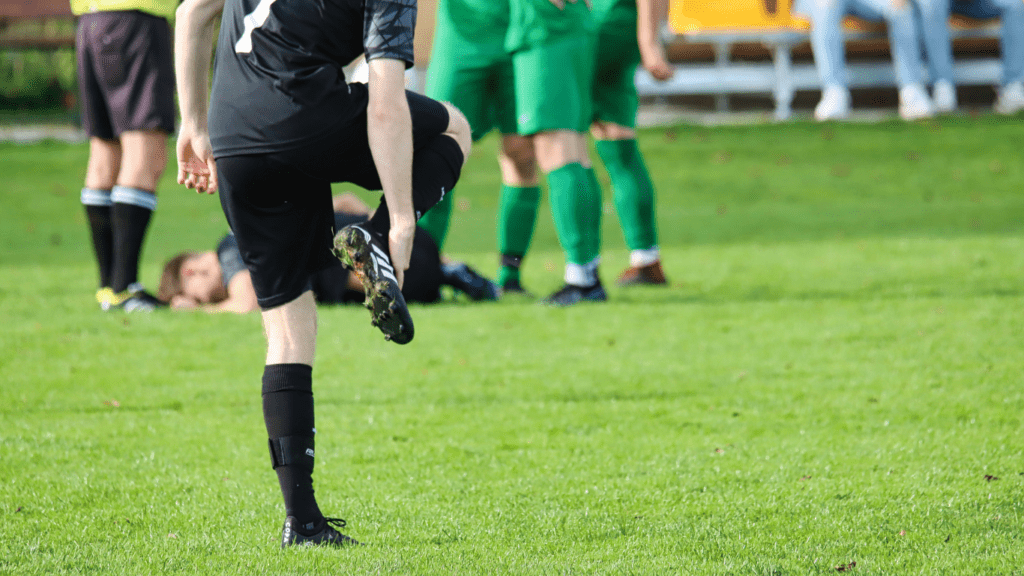Overview of the Injury
In this section, I’ll provide a detailed look into the injury that has sidelined a key player for the rest of the season.
The focus will be on the incident details and the initial medical assessment carried out after the injury.
Details of the Incident
During the last game, the player sustained a severe injury in the second half. While attempting to make a critical play, an awkward landing resulted in immediate discomfort.
Teammates and medical staff quickly surrounded the player, indicating the seriousness of the situation.
The incident halted the game for several minutes as emergency protocols were initiated to ensure the player’s safe removal from the field.
Initial Medical Assessment
The initial medical assessment revealed a complex injury involving multiple ligaments.
Post-evaluation, the team’s medical team confirmed a ruptured anterior cruciate ligament (ACL) accompanied by a medial collateral ligament (MCL) strain.
Advanced imaging, including MRI scans, substantiated these findings.
Given the severity, the medical team recommended surgery and extensive rehabilitation, guaranteeing that the player would not return for the season’s remainder.
Impact on the Team
Losing a top player deals a severe blow to the team’s overall performance and cohesiveness. This season-ending injury forces immediate and long-term changes.
Short-term Adjustments
Coaches must immediately reshuffle the starting lineup and bench players. The focus shifts to finding a temporary replacement, often promoting a backup player to a more pivotal role.
Practices now emphasize new plays suited to the current roster’s strengths. Players step up, and teamwork becomes critical.
Long-term Strategy Considerations
For the remaining season’s success, coaches rethink strategies without the injured star. The focus turns to developing other players, ensuring effective replacements.
Long-term planning includes scouting for new talent and possibly adjusting future game plans to prevent over-reliance on any single player.
This situation also prompts a review of the team’s injury prevention and conditioning programs.
Comparisons to Previous Key Player Injuries
Comparing this recent injury to past incidents provides insight into potential outcomes and strategies.
Analyzing previous key player injuries emphasizes the pattern of recovery and its effect on team performance and dynamics.
Recovery Outcomes and Team Performance
- Reviewing past injuries shows varied recovery timelines and team impacts.
For instance, when an MVP player suffered from an Achilles rupture, the team struggled initially but eventually adapted, though it missed the playoffs. - Alternatively, during a separate incident with a star player’s hamstring injury, swift medical intervention led to a quicker recovery and minimal season disruption.
These examples highlight the uncertainty that teams face when dealing with significant injuries, affecting both short-term and long-term performance.
- The current player’s ACL injury, comparable to past ACL injuries faced by others, typically requires a 6-9 month recovery period.
Past cases suggest a potential decline in performance upon return, as seen with athletes taking additional time to regain full strength and agility.
Therefore, post-injury performance remains speculative and hinges on successful rehabilitation and unwavering support from team medical staff.
Changes in Team Dynamics
Team dynamics often shift significantly following key player injuries. Historical instances reveal how losing a central figure forces other players to step up.
For example, when a team’s leading scorer was sidelined due to a knee injury, role players discovered new opportunities to shine, leading to unexpected improvements in their stats.
Conversely, an injury to a defensive leader previously exposed weaknesses, compelling the coaching staff to rethink defensive strategies.
In this season, losing the current top player will likely mirror these past scenarios.
Current analysis shows that the team’s immediate response includes not just tactical reshuffles but also a boost in team unity, aiming to compensate for the loss collectively.
Key players are expected to assume more prominent roles, while younger talents might be fast-tracked to the forefront, influencing future team dynamics and growth positively.
Examining previous cases helps predict likely shifts and informs strategies to maintain team cohesion and performance despite challenges.
Player’s Career Implications

Losing a top player creates far-reaching consequences, affecting both the current and future seasons of the team’s performance.
Impact on Current Season
The top player’s absence places an immediate strain on the team’s composition and game strategies.
Losing a key player disrupts established dynamics and forces the coach to rely heavily on backup players. This adjustment often lowers overall performance due to the gap in experience and skill.
Daily trainings now focus on integrating new tactics, but without the key player’s unique abilities, success becomes more challenging.
Implications for Future Seasons
The injury’s long-term impact extends beyond this season, influencing future strategies and player development plans.
Recovery from:
- ruptured ACL
- MCL strain
can span 8-12 months, according to Johns Hopkins Medicine.
This timeline affects the player’s ability to participate in offseason training and pre-season matches, crucial periods for conditioning and team synergy.
Recruitment strategies need revision to account for the potential delay in the top player’s return.
Scouts might prioritize finding a versatile player who can both fill the gap and complement the team’s core strengths upon the injured player’s recovery.
Additionally, the player’s injury history now becomes a consideration in their career trajectory, potentially impacting contract negotiations and playing time.
The team may also invest more in injury prevention and rehabilitation programs to safeguard against future setbacks, ensuring a more robust roster moving forward.
Recovery and Rehabilitation Process
This section explores the essential steps in the player’s journey back to full fitness, focusing on medical interventions and the expected timeline for recovery.
Medical Interventions
Treating the player’s injury required a multifaceted approach. Following the game incident, initial assessments confirmed a ruptured ACL and an MCL strain.
Surgeons performed reconstructive surgery to repair the damaged ligaments. Post-surgery, the player immediately started with passive mobilization exercises to maintain joint flexibility.
Specialists then designed a tailored physiotherapy program targeting muscle strengthening and range of motion improvements.
In addition, the player received regular bi-weekly evaluations to monitor progress and make necessary adjustments to the rehabilitation protocol.
Physicians also incorporated advanced techniques such as hydrotherapy and neuromuscular electrical stimulation to enhance recovery efficacy.
Expected Timeline for Recovery
The recovery process for such severe injuries generally spans several months. Typically, the player will undergo three primary phases of rehabilitation.
Initially, the acute phase lasts six to eight weeks, focusing on reducing pain and inflammation while restoring basic mobility.
The intermediate phase, extending from the second to the sixth month, prioritizes rebuilding strength and stability through intensive physiotherapy.
Finally, the advanced phase targets sports-specific training and conditioning, preparing the player for a return to competitive play.
Each phase’s duration varies based on the player’s response to treatment, adherence to the rehabilitation plan, and absence of complications, leading to a total recovery period of approximately nine to twelve months.


 is a key contributor to Luck Lounge Land, bringing her expertise in psychology and behavioral analysis to the platform. Her work focuses on the psychological aspects of gambling, helping users understand player motivations and decision-making processes. Morgana’s well-researched articles make her a respected voice in the community.
She also contributes to the site's 'Game Theory Academy,' developing modules on strategic thinking. Outside of her professional work, Morgana enjoys studying the latest trends in casino games and behavioral research. Her passion for the field and engaging writing make her a valuable asset to the Luck Lounge Land team.
is a key contributor to Luck Lounge Land, bringing her expertise in psychology and behavioral analysis to the platform. Her work focuses on the psychological aspects of gambling, helping users understand player motivations and decision-making processes. Morgana’s well-researched articles make her a respected voice in the community.
She also contributes to the site's 'Game Theory Academy,' developing modules on strategic thinking. Outside of her professional work, Morgana enjoys studying the latest trends in casino games and behavioral research. Her passion for the field and engaging writing make her a valuable asset to the Luck Lounge Land team.
